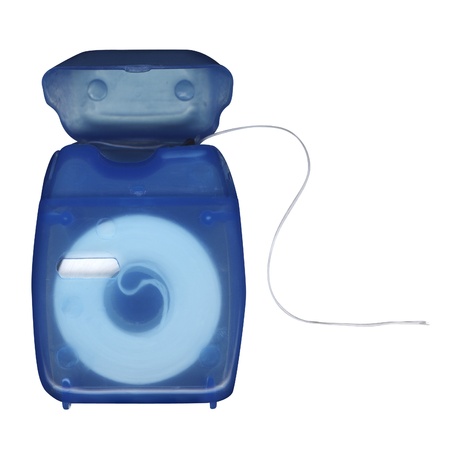 The other day I went to get my teeth cleaned by my favorite dental hygienist, Lauren. I’m not a big fan of the dentist, but I do like having my teeth cleaned (and I love hearing what Lauren’s mischievous cat has been up to!).
The other day I went to get my teeth cleaned by my favorite dental hygienist, Lauren. I’m not a big fan of the dentist, but I do like having my teeth cleaned (and I love hearing what Lauren’s mischievous cat has been up to!).
Lauren looked around in my mouth for a few minutes and said, “Your gums look great.” I proudly replied, “I’ve been flossing!”
I didn’t used to floss regularly. In fact, like many people, I’d be a champion flosser for about one month after visiting the dentist. As the weeks went on, though, it became less and less frequent, until I stopped entirely.
So what’s changed since then? It’s pretty simple, actually: I started tracking it.
When I wrote out my goals this year, I included taking better care of myself, and flossing regularly was part of that. Now that I track it, I get it done.
As you might imagine, the same approach-tracking, not flossing-can improve the way you run your business.
Here’s how to make it happen:
Likewise, if you have a business goal of “Growing my client base by 50 percent,” you might break that down into “publish my newsletter monthly,” “have lunch once a week with someone in my network,” and “schedule one public speaking event per quarter.”
The idea is that, by breaking the big goals into measurable chunks, you can manage your progress over time.
2. Create a tracking system you can live with. I like Excel, and so it’s easy (and fun) for me to create a spreadsheet with one tab for each goal I’m tracking. I keep the spreadsheet open at all times, which allows me to quickly glance at any tab and see how I’m doing as the year unfolds.
But maybe you hate Excel, or find it too complicated. That’s fine, as long as you develop some kind of consistent system for tracking. It can be a whiteboard in your office, a list on your desk or anything else that you dream up.
As with choosing a machine to work out on at the gym, if you don’t like it and understand how it works, you won’t use it. Create a tracking system you like, and use it.
3. Don’t be too hard on yourself. One problem with tracking is that, if you fall off the wagon for a while, the tracking system serves as reminder of how little you’ve done. Try not to get caught in that trap.
The way I look at it, every day is a new day. Even if I fall down on one or two of my items for a while, I give myself permission to start again from where I am and move forward. I’ve come to realize that the purpose of my system is to track progress, not beat myself up about past behavior!
Tracking what you want to accomplish might seem like a lot of work at first, but it works. Thanks to my system, my goals are in front of me every day, along with the action steps that I need to accomplish them. For me, this approach has transformed my goals from chores into fun action items. And I have to admit, it’s also nice to have clean, shiny teeth!

Great advice for life and business. Measure it and manage it!
Hey Steve – thanks for writing. How’s everything with you? How’s your podcast going?
It’s going great, Belinda! This weeks’ podcast episode features a Google AdWords / Analytics expert. Have you ever dug into the topic of lead generation for your clients?
Not for my clients but when I had my online retail store I spent a lot of time on Google AdWords campaigns to bring visitors to my site. It can be very expensive if you don’t know what you’re doing. I think it’s great that you’re bringing an expert in. I’ll be sure to listen.
Thanks, Belinda! His name is Hamilton Wallace and his interview posted. 🙂
Thanks for reminder of tracking our progress.
I’d love to see how you set up your Excel sheet for each
goal–if you’d share that. Thanks!
Hi LJ – great to hear from you again! I’ll post something to my website and let you know. Great idea!